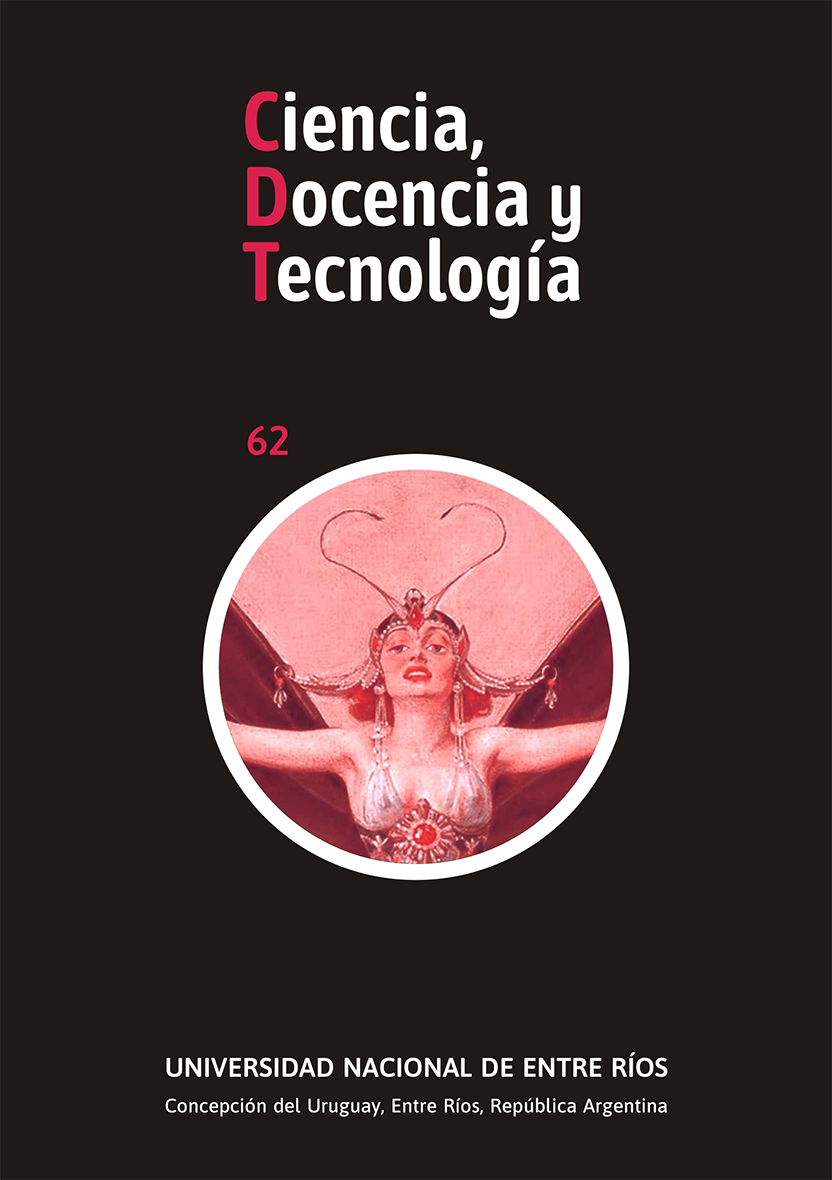Chronicle of an announced invisibility. What does the quality of a scientific magazine depend?
DOI:
https://doi.org/10.33255/3262/717Keywords:
quality publications, research, scientific production, indicatorsAbstract
The purpose of this work is to determine whether the classification assigned by the SCImagoJournal Rank (SJR) indicator to each of its publications is related to the discipline, type of publication and region of origin of the publication. We worked with a population of 31,971 publications. A Pearson Chi-Square analysis and a Logit Model were performed in order to corroborate the null hypothesis (Ho): the hierarchy of the publication cannot be explained through discipline, type of publication and region. The main results allowed to reject the Ho, so it is concluded that the ranking of the publications can be explained through the discipline, the type of publication and the region, so the publication comes from Europe or North America is more likely of belonging to the group of publications with the best classification (Q1 and Q2), while if the publication comes from Latin America, Eastern Europe, the Asian Region, the Middle East, Africa and the Pacific Region, it has negative effects.
Downloads
References
• Alperin, J. P., &Rozemblum, C. (2017). La reinterpretación de visibilidad y calidad en las nuevas políticas de evaluación de revistas científicas. Revista Interamericana de Bibliotecología, 40(3), 231–241. https://doi.org/10.17533/udea.rib.v40n3a04
• Beigel, F. (2013). David y Goliath. El sistema académico mundial y las perspectivas del conocimiento producido en la periferia. Pensamiento Universitario,15, 15-34. Retrieved from
• Beigel, F., &Salatino, M. (2015). Circuitos segmentados de consagración académica: las revistas de Ciencias Sociales y Humanas en la Argentina. Información, cultura y sociedad, (32).Beigel, F. (2015 b.). Culturas alteradas, 12–21. Disponible en
https://ri.conicet.gov.ar/handle/11336/43518?show=full
• Beigel, F., Gallardo, O., &Bekerman, F. (2018). Institutional Expansion and Scientific Development in the Periphery: The Structural Heterogeneity of Argentina’s Academic Field. Minerva, 56(3), 305–331. https://doi.org/10.1007/s11024-017-9340-2
• Bordons, M., Felipe, A., & Gómez, I. (2002). Revistas científicas españolas con factor de impacto en el año 2000. Revista Española de Documentación Científica, 25(1), 49–73. Retrieved from
http://redc.revistas.csic.es/index.php/redc/article/viewArticle/86
• Borrego, M., & Urbano, C. (2006). La evaluación de revistas científicas en Ciencias Sociales y Humanidades. Informacion Cultura y Sociedad, 14(14), 11–27. https://doi.org/10.1300/J371v15n01_03
• Contreras, C., Edwards, G., &Mizala, A. (2006). La productividad científica de economía y administración en Chile. Un análisis comparativo. Cuadernos de Economía, 43, 331–354. https://doi.org/10.4067/S0717-68212006000200005
• Di Bitetti, M. S., & Ferreras, J. A. (2017). Publish (in English) or perish: The effect on citation rate of using languages other than English in scientific publications. Ambio, 46(1), 121–127. https://doi.org/10.1007/s13280-016-0820-7
• Falaster, C., & Ferreira, M. P. (2017). What drives publishing in top management journals: an analysis of language, quantitative competency and financial support. International Journal of Bibliometrics in Business and Management, 1(1), 52-69. https://doi.org/10.1504/IJBBM.2017.10003441
• García Guillén, D. (2005). De los colegios invisibles al campus virtual. II Jornada Campus Virtual UCM: Cómo Integrar Investigación y Docencia En El CV-UCM, 12–18.
• Gómez-Núñes, A., Vargas-Quesada, B., Moya-Anegón, F. & Glanzel, W. (2011). Improving SCImago Journal & Country Rank (SJR) subject classification through reference analysis. Scientometrics, 89, 741–758. DOI 10.1007/s11192-011-0485-8
• Guédon, J.-C. (2011). El acceso abierto y la división entre ciencia principal y periférica. CyE, 3(6), 135–180. Retrieved from http://bibliotecavirtual.clacso.org.ar/ar/libros/secret/CyE/6/CyE-6_Guedon-CLACSO.pdf
• Guédon, J. C. (2017). Open access: Toward the internet of the mind. Budapest open access initiative, February, 23 Disponible: https://apo.org.au/sites/default/files/resource-files/2017/02/apo-nid74479-1114231.pdf.
• Liberatore, G., Vuotto, A., & Fernández, G. (2013). Una cartografía de las revistas científicas en ciencias sociales y humanidades en Argentina: diagnóstico, evaluación y marcos de referencia. Perspectivas emGestão&Conhecimento, 3(2), 259-270.
• López Navarro, I., Moreno Fernández, A. I., & Rey Rocha, J. (2017). Dificultades de los investigadores españoles para publicar en revistas internacionales: métricas, editores y multilingüismo. Teknokultura, 14(1). https://doi.org/10.5209/TEKN.54142
• Luchilo, J. L. (2019). Revistas científicas: oligopolio y acceso abierto. Revista CTS, n° 40, vol. 14, Febrero de 2019 (pag. 41-79).
ISSN1850-0013. Disponible en http://www.revistacts.net/volumen-14-numero-40/352-articulos/873-revistas-cientificas-oligopolio-y-acceso-abierto
• Macias, H. (2017). El sentido de publicar en revistas Scopus: el caso de los autores colombianos de las áreas negocios, administración y contabilidad. Sci. Hum. Action | Vol. 2. No.1. pp. 10 – 18. enero-junio. ISSN: 2500-669X. Medellín, Colombia.
• Madhan, M., Gunasekaran, S., & Arunachalam, S. (2018). Evaluation of research in India – are we doing it right? Indian Journal of Medical Ethics, (March). https://doi.org/10.20529/IJME.2018.024
• Man, J.P., Weinkauf, J.G., Tsang, M. y Don D. Sin, J. Eur J Epidemiol (2004) 19, 811-817. https://doi.org/10.1023/B:EJEP.0000036571.00320.b8
• Meneghini, R., Packer, A. L., &Nassi-Calò, L. (2008). Articles by Latin American authors in prestigious journals have fewer citations. PLoS ONE, 3(11), e3804. https://doi.org/10.1371/journal.pone.0003804
• Santelices, B. (2010). Educación Superior en Iberoamérica. Informe 2010. Santiago, Chile: RIL editores.
• Senglen, Per O. 1997. Why the impact factor of journals should not be used for evaluating research. BMJ,314(7079), 498-502.
• Sarthou, N. (2019). Tendencias en la evaluación de la ciencia en Argentina: género, federalización y temas estratégicos. Ciencia, Docencia y Tecnología, 30(59 nov-abr). https://doi.org/10.33255/3059/695.
• Vasen, F., & Vilchis, I. L. (2017). Sistemas nacionales de clasificación de revistas científicas en América Latina: tendencias recientes e implicaciones para la evaluación académica en ciencias sociales. Revista Mexicana de Ciencias Politicas y Sociales, 62(231), 199–228. https://doi.org/10.1016/S0185-1918(17)30043-0
Published
How to Cite
Issue
Section
License
Copyright (c) 2021 Gabriela Fernanda Mollo Brisco, Estfanía Solari, Daniela Blanco

This work is licensed under a Creative Commons Attribution-NonCommercial-ShareAlike 4.0 International License.
The authors retain the copyright and grant the journal the right to be the first publication of the work, as well as licensing it under a Creative Commons Attribution License that allows others to share the work with an acknowledgment of the authorship of the work and publication initial in this magazine. All content is published under the Creative Commons 4.0 international license: Attribution-Non-Commercial-Share Alike.






